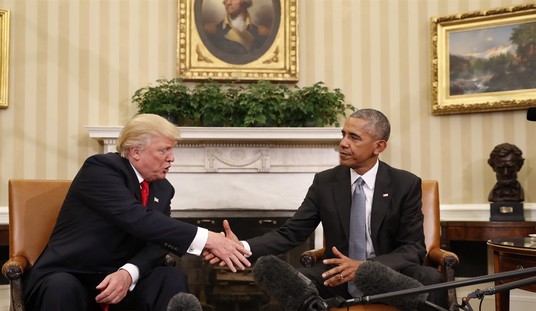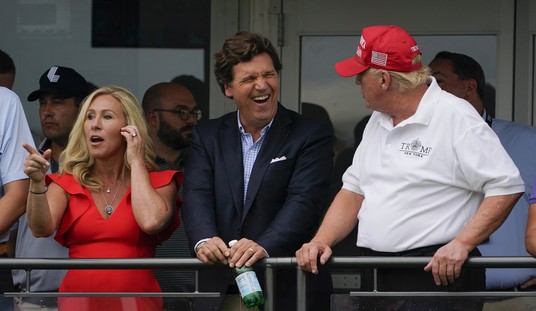I read Spyridon Mitsotakis’ article in PJMedia describing the Egyptian disinformation campaign in the lead-up to the Yom Kippur war of 1973 just after finishing Ed Epstein’s JFK Assassination Diary, his personal account of how he was drawn into reporting one the greatest whodunnits of the 20th century. The parallels between the two are striking but subtle.
What connects the two articles together is Russia, formerly known as the Soviet Union and the art of disinformation. Strategic lying figures prominently in both accounts. Mitsotakis argued that Egypt and the USSR faked a falling out between themselves in order to lull Israel and the West into thinking that no war was possible, for no one would believe that Sadat would go it alone.
Using disinformation and influence agents like Victor Louis and Armand Hammer, the Soviets were able to dupe Israel and its allies into believing that Israel was in no danger. Meanwhile, they were preparing for the “military solution” that Syrian dictator Hafez al-Assad had pushed for.
Here was no mere tactical deception. The Egyptians and the Soviets manufactured a whole bogus world view and gained an advantage that almost ended the state of Israel. The small lie rarely succeeds. The Big Lie always has a much bigger chance.
The direct parallel in the JFK saga was the role played by Yuri Nosenko, the Soviet defector who conveniently came to hand in the aftermath of that Day in Dallas to reassure the CIA that they played no part in grooming, training or directing Oswald. The deepest mystery in that whole convoluted conspiracy was why: why the Soviets took the trouble to painstakingly establish Nosenko; why they sent him across with the message the Sovs had nothing to do with nothing. But the biggest mystery as Epstein subsequently discovered, was not the bona fides of Nosenko. What troubled CIA counterintelligence chief James Angleton was something much subtler: the question of who was confirming Nosenko’s story within the US intelligence agencies to lend him credibility, who was providing the “feedback” that made the agencies willing to swallow the line being fed to them by the Soviet defector.
For some in the CIA and FBI at least, the JFK assassination turned into the Hunt of the Great Soviet Mole, the search for the inside man responsible for “buying” the disinformation that the Russians were selling.
Hunting the Great Soviet Mole turned out to be a career ending move for Angleton and a host of others, Epstein learned from the men he interviewed. Anyone who reads the JFK Assassination Diary hoping to find answers to that day in Dallas will be disappointed. After reviewing his diaries, combing his notes and following clues that no one had the time to run down in the hectic days of the investigation, Ed Epstein is still left with more mysteries than solutions.
Yet his efforts are not wholly in vain. For upon reflection the answer to the identity of the Great Oz pulling strings behind the curtain for the Soviets in DC is self-evident. It is Moscow itself through a system of influence, not simply a single individual. The Great Mole sought by Angleton, whoever he might have been, is probably long dead. But the Great Mole as a system must have had successors, for they worked their magic in 1973, Mitsotakis argued, in time to fool the Washington and Israel over Yom Kippur.
In fact, the system of influence may even be in business today, what with Barack Obama pondering a nuclear deal with the Iranians, convinced the Ayatollahs have turned a new leaf; now our worthy partners for peace; a conclusion of course not in the slightest concocted by the Russians, or anyone else so we are told.
But maybe though the singers change the song remains the same. If you want to sell a disinformation ditty in Washington, the Russians/Soviets have learned that you don’t go knocking on the doors of the intelligence professionals who are paid and trained to cynical, suspicious and careful. You go to their vain, ignorant and greedy political masters to peddle the Legend. You don’t try to get past Angleton, you go straight to the pols. For if one were to characterize the susceptibility of DC it would be tough in the middle and soft at the top.
It was not always so. Though it is rarely recalled the founding fathers were talented counterintelligence operatives themselves; people who successfully conspired against and ultimately defeated the secret service of the greatest power of the day: Britain. The American revolution was manifestly very hard at the top.
Before the outbreak of the Revolution, the American colonial government, the Continental Congress, created the Committee of Correspondence in 1775. The purpose of the committee was to establish foreign alliances and gain the aid of foreign intelligence resources. The original intent of the committee was to facilitate the sharing of information about British colonial policy, but at the start of the Revolution, the Committee seized and combed mail for vital intelligence information. The organization was renamed the Committee of Secret Correspondence, and then the Committee of Foreign Affairs, and employed trusted Patriot sympathizers in Britain to feed American leaders intelligence information. After establishing protocol for obtaining information, the committee established a network of couriers to disperse information to battlefield commanders and key government officials. The committee also sought the aid of French forces in the war effort.
The Second Continental Congress also established the Secret Committee. This clandestine committee arranged for American privateers to purchase and smuggle arms to the United States. The committee used large sums of money to pay for weapons, and additionally solicited aid from Britain’s numerous European rivals. The world of the Secret Committee began in 1775, amassing weapons while still under British rule. After the Declaration of Independence was signed, the committee burned its papers and transaction ledgers to protect their contacts in case the colonies lost their bid for sovereignty.
The smuggling of weapons proved a successful venture. The United States armed its troops within months, although supplies remained limited throughout the course of the war. Many American leaders, including Thomas Jefferson, ran successful privateering ventures, using their wealth and diplomatic contacts abroad to smuggle arms for the war effort. American privateers ran their illegal cargo through the British blockade under the guise of foreign named vessels and foreign flags. Patriot spies also learned the new British semaphore code, enabling blockade runners to falsely identify themselves as British ships.
The first United States counterintelligence operations were directed by the Commission for Detecting and Defeating Conspiracies. The commission endowed several groups, mostly in New York and Philadelphia, with the task of apprehending British spies. The organization was the nation’s first secret service, employing local militia under its command to help ferret out suspected traitors and enemy spies. The group used the criteria defined by the Committee on Spies when identifying, trying, and sentencing suspects. The rules of the committee, incorporated into the Articles of War in 1776, defined the crimes of treason and espionage during the course of war, and shaped the American intelligence community with its strict definitions of intelligence information, espionage acts, conspiracy, and aiding the enemy.
By comparison to the Founders many of today’s political elites are rank fools; the placemen for special sexual pleadings, political hacks promoted into power who vote on instruction or “activists” have never managed an organization or held a normal job in their lives. They are incompetent, soft targets, dead meat for the Russians/Ayatollahs/KSA/ISI — more apt to be played than to play.
The decline in toughness at the top and the proliferation of mediocrity is due mostly to the gradual destruction of the most effective counterintelligence provisions of the constitution: the system of checks and balances and the turnover of public officials built into the system. These two features made the Republic enormously resistant to subversion because it reduced the possibility of unfaithfulness by the agent (government) to the principal (the voter).
For as long as Congress turned over and no political dynasties emerged the attitudes of America’s government would closely mirror the attitudes of constituents. There would be no one at the top, neither person nor faction, to provide “feedback” to a sent agent of disinformation because the formation of such a subversive elite was itself difficult. But as time passed, Washington no longer turned over. It petrified into the ossified club it has become today; easy to subvert by anyone with the money and smarts to do it. As Storming the Castle puts it, Washington is Hotel California. Once in, you never have to check out.
In a 2009 article for The Journal of Politics, John Friedman of UCLA Berkeley and Richard Holden of the MIT Sloan School of Management said that “the probability that an incumbent in the US House of Representatives is re-elected has risen dramatically over the last half-century; it now stands at nearly 95% .. conditional on running”. … In an article titled “Pyongyang on the Potomac”, The Economist said Congressional re-election rates compared favorably with rubber-stamp elections in totalitarian countries
And this is enormously useful to attackers because the Great and the Good defend each other with a tenacity that makes the Public School connection in Britain seem weak by comparison. The Great Soviet Mole may not have been a single person or even group of persons. Rather it collectively constituted a class whose first instinct was to protect their turf rather than find the truth. Maybe the Russians sent Nosenko knowing that Washington would want to believe him, just as the administration now wants to believe Iran is our pen-pal for peace. It might be true, but is it true? Perhaps most interesting thing about Ed Epstein’s JFK Assassination Diary isn’t its portrayal of the Kennedy investigation, but its depiction of the Great DC Fact Machine; how Washington from the 1960s onward reacted to it. They wanted to believe Nosenko and so they believed.
It almost makes you wonder whether Angleton was right, only much more correct than even he could possibly imagine.
Did you know that you can purchase some of these books and pamphlets by Richard Fernandez and share them with you friends? They will receive a link in their email and it will automatically give them access to a Kindle reader on their smartphone, computer or even as a web-readable document.
The War of the Words for $3.99, Understanding the crisis of the early 21st century in terms of information corruption in the financial, security and political spheres
Rebranding Christianity for $3.99, or why the truth shall make you free
The Three Conjectures at Amazon Kindle for $1.99, reflections on terrorism and the nuclear age
Storming the Castle at Amazon Kindle for $3.99, why government should get small
No Way In at Amazon Kindle $8.95, print $9.99. Fiction. A flight into peril, flashbacks to underground action.
Storm Over the South China Sea $0.99, how China is restarting history in the Pacific
Tip Jar or Subscribe or Unsubscribe










Join the conversation as a VIP Member